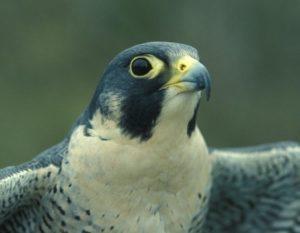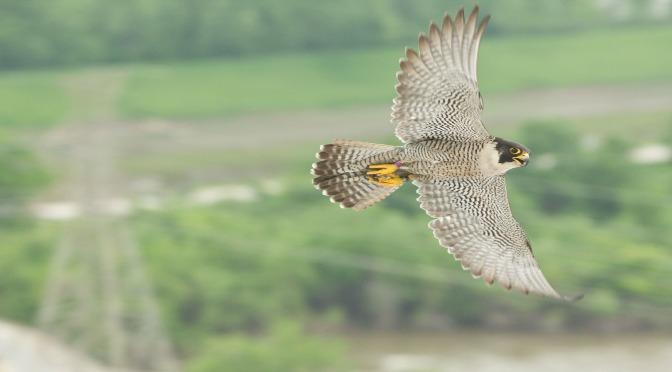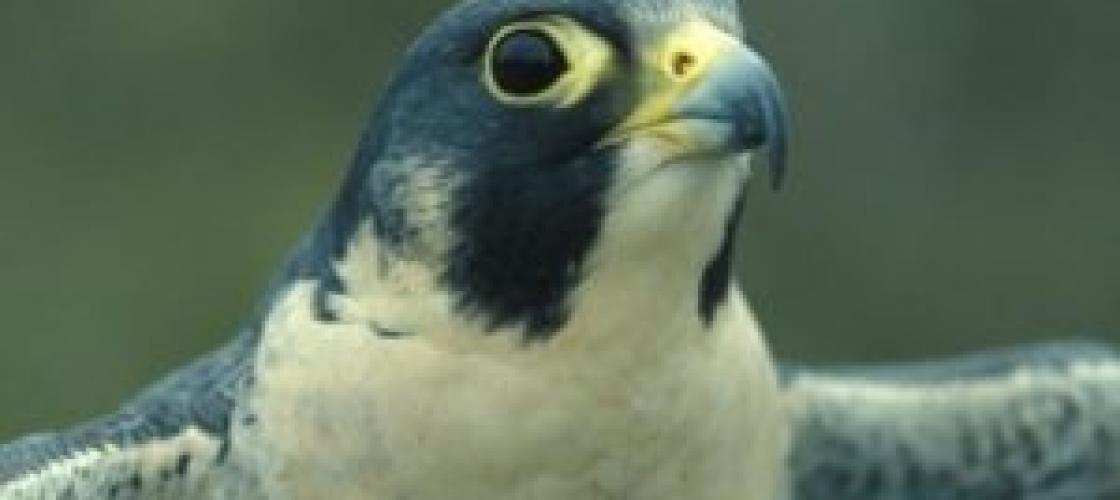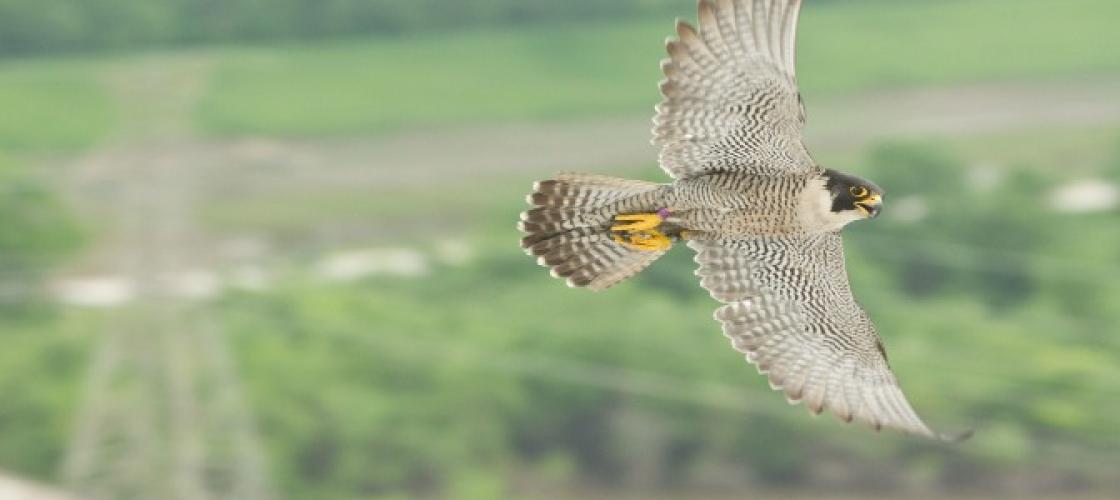A speedy wanderer has returned to Missouri's skies. The Peregrine falcon was nearly wiped out in the mid-1900s due to pesticide poisoning. With a chemical ban in place, biologists and falconers banded together to return falcons to places where they had disappeared. Falconers bred the birds and hatched the eggs, and biologists raised the chicks until they could live on their own. Now, the world's most common and fastest bird of prey can be seen around large cities and waterways.
Peregrine falcons hunt from high up in the sky and go into deep aerial dives at speeds topping 200 miles per hour to snatch their prey. Common feasts can include pigeons, shorebirds and ducks. They often nest on skyscrapers in large cities.
The word "Peregrine" means "wanderer" or "pilgrim." Although they have one of the largest migrations of North American birds, their great homing instincts bring them back to favored nesting sites that may be used for many generations.
You can see Peregrine falcons nesting near St. Louis -- watch highlight videos of nesting falcons. You can also view the live camera from mid-March to mid-June. The next time you find yourself among skyscrapers in Missouri, look up and see if you spy Missouri's speediest wanderer in the sky.
An Endangered Bird
- Historically, peregrines nested in small numbers on bluffs along the Mississippi, Missouri, and Gasconade rivers. By the late 1800s, only a few pairs remained in the state.
- Reintroduction projects have been relatively successful, and populations of peregrines have been established, with the birds using tall buildings as substitutes for cliff nesting sites, and more returning to former nest sites on suitable bluffs.
- Peregrine falcons have been prized by falconers since ancient times for their ability to hunt prey.
- Today, people are thrilled by their intensely fast flight and maneuvering ability. As this species has neared extinction, humans have rallied to save it—attesting to our appreciation of Peregrines.
Discover more about Peregrine falcons with the MDC Field Guide.




Recent Posts
























